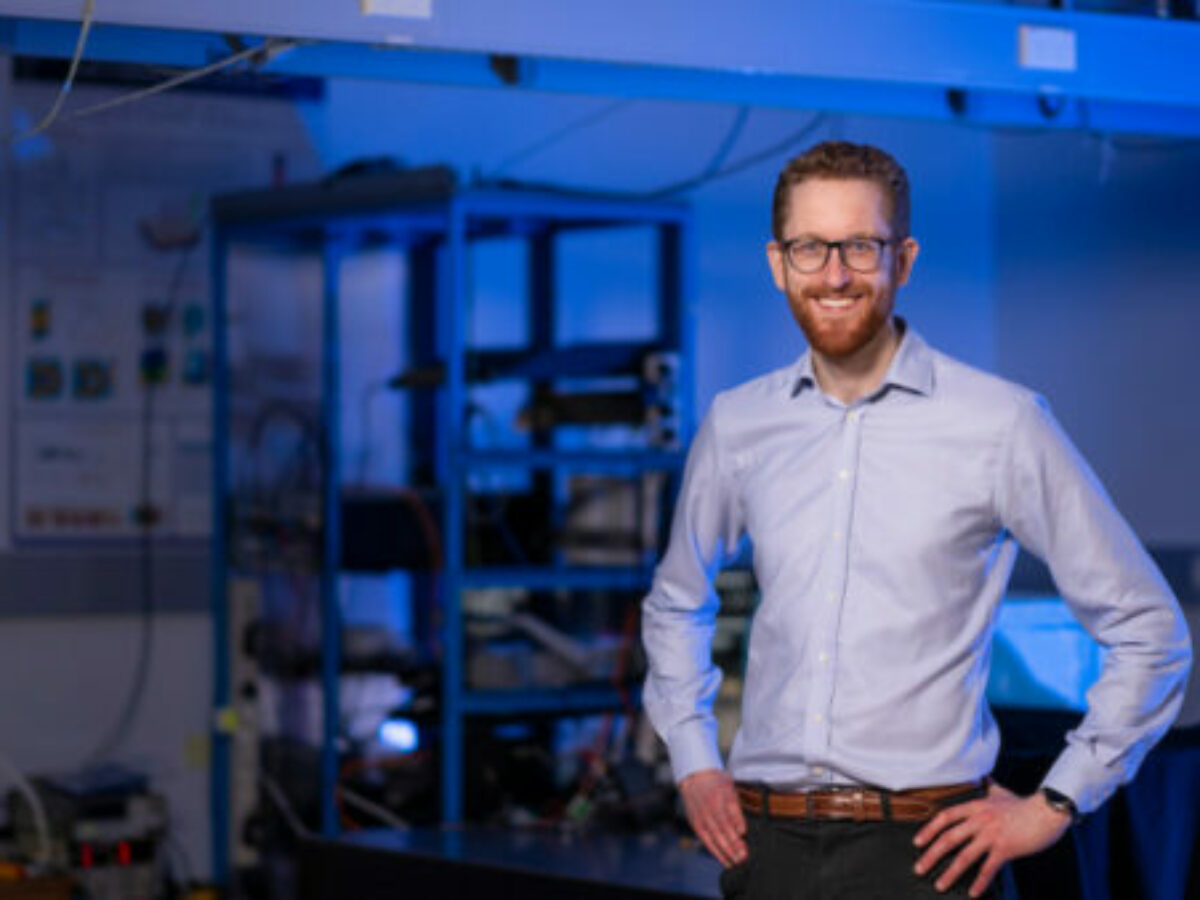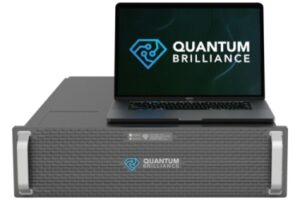An Australian-made quantum chip in every home? (podcast)

This week Quantum Brilliance announced a $26 million funding round, a significant boost to its lofty ambitions. Brent Balinski spoke to co-founder Dr Andrew Horsley about bringing Australian-made room-temperature quantum accelerators to the masses.
Among people who care about such things, Intel’s examination of Australia as a possible home for a fabrication site in the 1990s sometimes comes up, as it did in this publication’s recent semiconductor series.
Would the establishment of a chip factory then have made any difference to the nation’s miniscule contribution to the world’s semiconductor industry now?
It’s as fruitless to think about as any other “what if?” scenario, and perhaps it’s better to consider what could be versus what could’ve.
One Australian startup is aiming to be as ubiquitous as the venerable US chipmaker, with a similar focus on mainstream customers rather than just the very highest-end users.
“Cray was for many years the premier brand for supercomputers… Super-high-performing, big margins on products, but fundamentally a small market and kind of a niche product compared to the scale then that we saw with Intel and Nvidia,” Dr Andrew Horsley (pictured), CTO and co-founder of Quantum Brilliance, tells us.
“For us we are trying to be the Intel and Nvidia of quantum computing. To make devices that add a huge amount of computational power for users, but aren’t necessarily the absolute best that a quantum computer could be. They’re just very good, and much more usable, much more deployable, [and] can suit a much wider range of markets and applications.”
A major point of difference between QB and some of Australia’s other quantum computing upstarts is its focus on inhouse fabrication. It nominates its “secret sauce”, in fact, as its method for fabricating “defects” in diamond (which are then used for its qubits) with atomic accuracy.

Credit Quantum Brilliance
According to the company, this allows qubits to be close enough together to couple, an unaddressed problem by the previous diamond-based method of bombarding a surface with nitrogen atoms to create these defects.
The company’s approach – unlike most others for quantum computing – does not need refrigeration infrastructure and the associated costs needed to keep operations at close to absolute zero and their qubits coherent.
This week it received a boost through a $26 million funding round, led by Breakthrough Victoria.
According to a statement, it will help QB to, among other things, “improve manufacturing and fabrication techniques.”
Horsley likens competing approaches to operating qubits, with their big, expensive dilution refrigerators, to the mainframe computers of the 1950s, with a lack of portability and a limited set of applications.
QB has previously said it aims to fit 50 qubits onto its accelerators – one of which, the size of a server rack module, is in operation at Pawsey Supercomputing Centre in Western Australia – by 2025.
It’s admittedly an appealing vision, and a clutch of investors including the Victorian government, Main Sequence and Investible appear to share it: an Australian technology company, fabricating here, putting the power of quantum computing into every home.
“So what good looks like for us is actually in the end you open up your laptop and you’ve got an Intel sticker, and you’ve got a Quantum Brilliance sticker there,” explains Horsley.
“And there’s a small quantum processor inside there and it’s just making quantum computing an everyday technology, like the microprocessor did that took us from mainframe classical computers to computing being an everyday technology in your laptop, in your phone, in robots – all of that kind of stuff.”
In this episode of @AuManufacturing Conversations with Brent Balinski, Horsley tells us about growing qubits in diamond chips, why the growth of the quantum computing industry will need tonnes of roles involving non-quantum specialists, and more.
Episode guide
0:30 – introduction to Horsley’s career as a physics researcher and his company’s origins.
2:16 – Getting past mainframe-type quantum computing infrastructure and making it into an everyday technology.
3:35 – Some traditional electronics technologies used to enable their qubits.
5:30 – Their approach to fabricating diamond-based qubits versus implantation – “basically firing atoms at very high speed into a diamond” – and introducing an array of them inside a diamond with atomic precision.
6:55 – Diamond wafers are “unromantic rectangles” bought off-the-shelf and transformed, with more diamond grown on top.
8:10 – The Cray supercomputer analogy. Making quantum computing “an everyday technology” and enabling increasing compute density for lots of users.
10:50 – A team of 90, with 50 in Australia.
11:40 – The $US 18 million raise and what it will enable.
13:04 – The Pawsey Supercomputing Research Centre installation in WA. “It is not a computational tool. It’s a tool for understanding how you deploy quantum systems and have them still operate and be performant. How do you integrate them into other devices?”
14:50 – How do we not blow it with Australia’s strength in quantum computing research and startups? It’s all about interlinks.
16:30 – We are fortunate that quantum attention is getting the attention it needs here, but it’s how do we shape that to get the best outcome.
Further reading:
AUSTRALIA’S PLACE IN THE SEMICONDUCTOR WORLD: THE INDUSTRY IN AUSTRALIA AND ITS OPPORTUNITIES
QUANTUM COMPUTING MANUFACTURING BECKONS WITH QB’S CASH RAISINGQUANTUM BRILLIANCE MOVES TO DEVELOP HYBRID QUANTUM COMPUTER
QUANTUM BRILLIANCE IN GERMAN QUANTUM COMPUTING RESEARCH
QUANTUM BRILLIANCE BRINGS QUANTUM POWER TO SUPERCOMPUTER
QUANTUM TEAM FOCUSSED ON GETTING IT DONE HERE
Picture: credit Jamie Kidston/The Australian National University
@aumanufacturing Sections
Analysis and Commentary Awards Defence Manufacturing News Podcast Technology Videos






